The one feature that sets birds apart from all other animals isn’t their bills or wings or that they lay eggs, there are other animals that have or do these things too. What makes birds unique is that they have feathers. Feathers are made from keratin, the same substance rhino horns, fish scales, and human fingernails are made of. Feathers grow out of follicles in the skin, a bit like hair on humans. As the feather gets longer, it develops barbs and barbules. Unlike human hair, feathers stop growing when they reach their full size.
Compared with the scales of reptiles, feathers are filamentous, soft in texture, flexible, and lightweight structures with extraordinarily diverse functions. No comparable structures exist in other living vertebrates. Feathers are dead structures that wear easily, and they must be replaced regularly through the molt. Fe athers are essential for both temperature regulation and flight. They insulate the body, repel water, and help birds to maintain their high body temperature. Lightweight and strong, the long feathers of the wing generate lift and thrust for flight. The wide variety of feather colors and coloration patterns are used by birds for camouflage and social and sexual communication.
There are about 10,000 species of birds in the world and about 10,000 different uses that birds have for feathers.
Today we’ll talk about the most common uses for feathers across species,
Four uncommon uses for feathers depending on their type, and some super-rare uses for feathers specific to species also. We will also discuss chicken feather reuse.
Four uncommon uses for feathers depending on their type:
#1 Bristle Feathers
See the whiskers on this nightjar?
They’re not whiskers. They’re feathers!
They’re formed by growing a feather without all the feathery parts. In function, they probably do a lot of the same work as whiskers. Scientists found that there are nerves to detect vibration connected to each bristle.
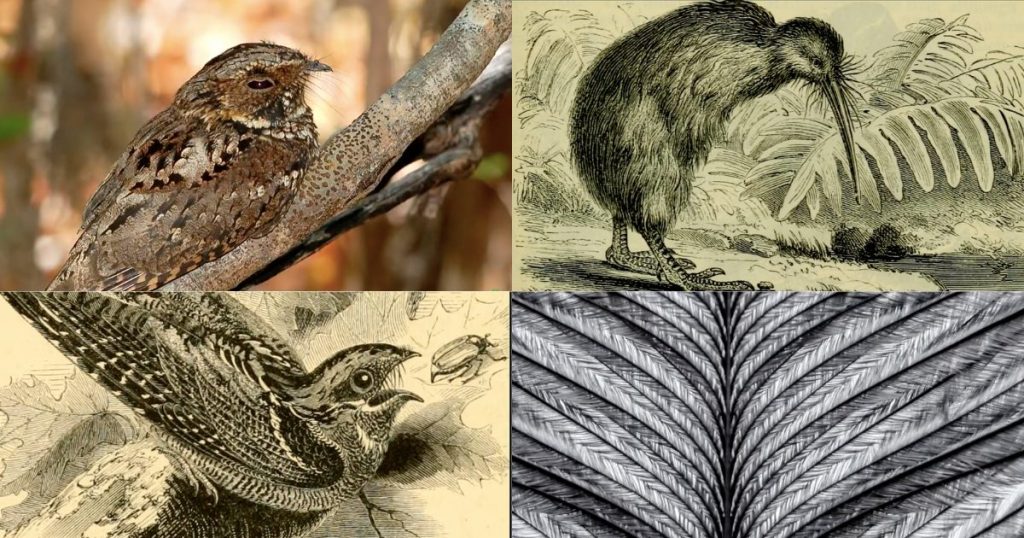
So they probably help the bird feel around in the dark.
Quick note: scientists are not sure, but that seems like a good guess. There’s more to learn! Birds with Rictal Bristles, as they’re called, include nightjars and kiwi.
#2 Powder Down
A lot of birds face a challenge. Feathers are great at keeping you dry and warm and flying until the feathers themselves get wet.
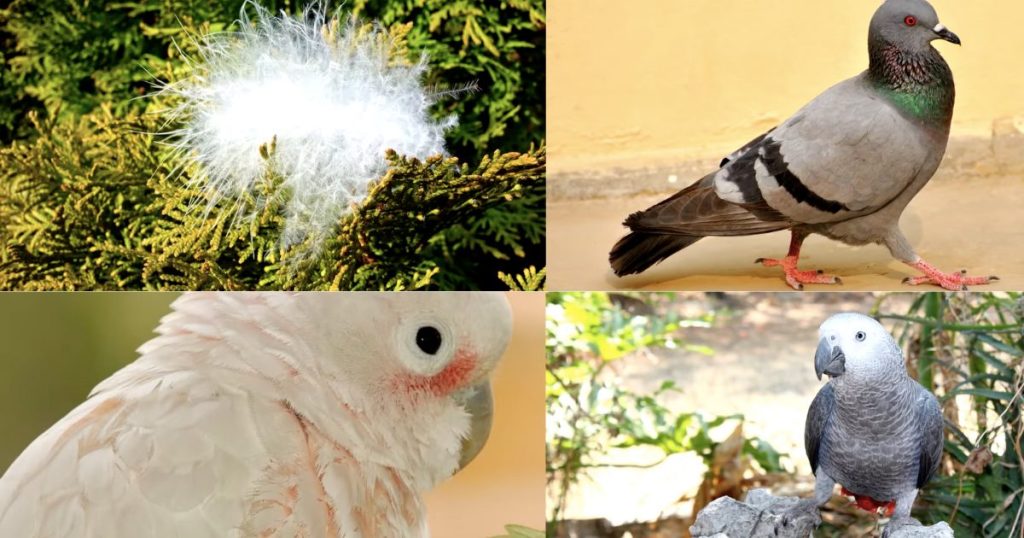
Then feathers are a soggy wet mess, and you’re cold and can’t fly. Powder down aims to solve that problem. Powder-down feathers have almost no structure, just long, bendy strands. The strands break into tiny pieces of powder that get everywhere. The powder coats all the outside feathers and forms a water-resistant layer. Now the bird has time to fly to a dry perch. Birds that produce powder down include cockatoos, African Grey parrots, and herons.
#3 Oil Wick
There’s a second solution to the problem of getting wet. Lots of birds have an oil gland just above the top of their tail. They get oil from the gland and spread it on their feathers to form a waterproof coat.
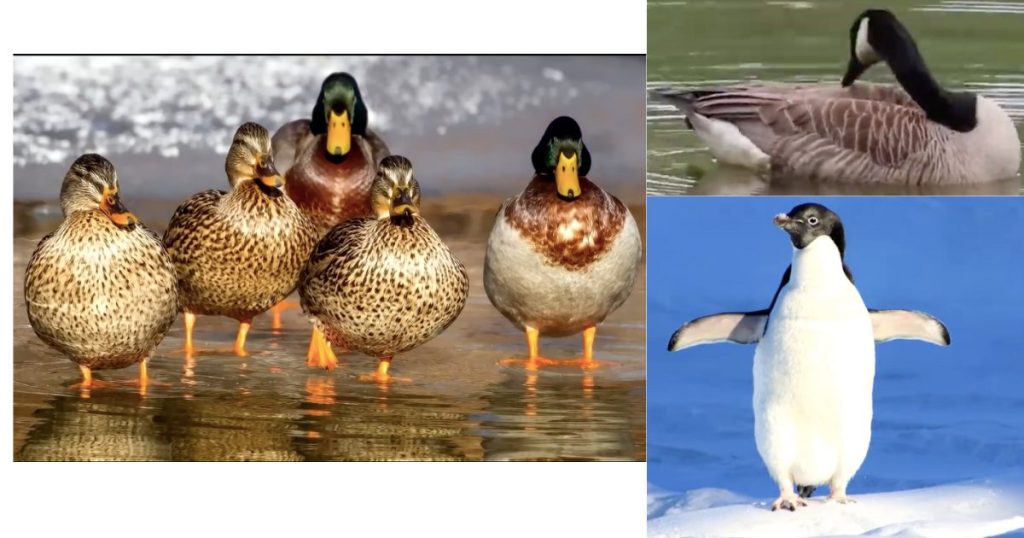
So for lots of birds, if you see them preening their feathers, this is what they’re doing. But some birds have one tiny little feather at the top of their oil gland that acts like a wick to bring the oil out. It must be the most waterproof feather a bird has because it’s soaking in oil all the time. But, of course, not every bird with an oil gland has a wick feather. Birds that have an oil wick include the penguin and macaws.
#4 Nesting Material
Some birds line their nests with soft materials like grass, fur, and feathers.
And what easier source of feathers than their feathers! No need to go out searching when you have the right material so close to home. As a bonus, lots of bird mothers lose a patch of feathers on their bellies just as it’s time to incubate their eggs. The bare patch helps send heat to her eggs. But if she’s losing feathers anyway,
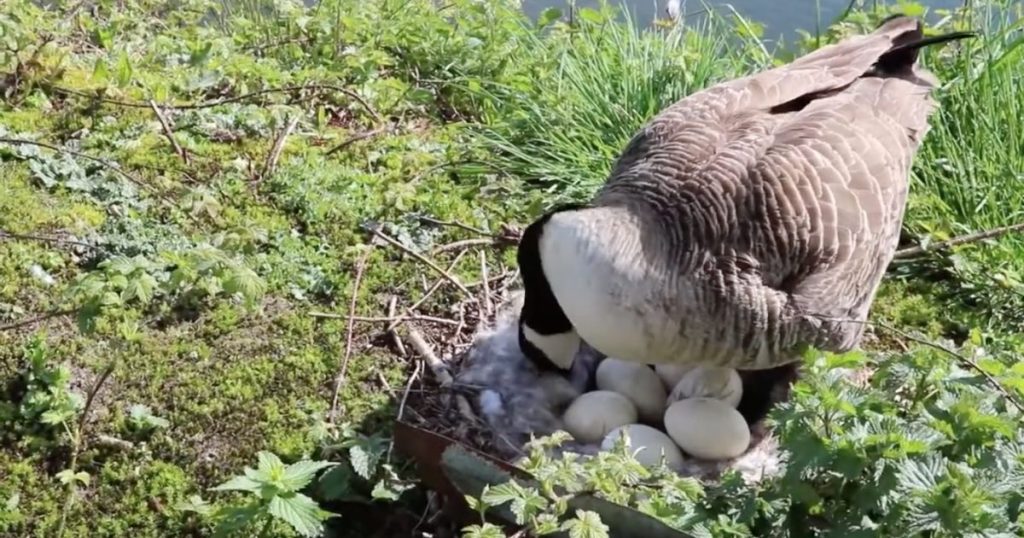
why not build them into the nest?
Birds that use their feathers in nests include ducks and starlings.
Those are four uncommon uses for feathers. Birds use feathers as whiskers, for waterproofing, and to build nests.
Most common uses of feathers across species
#1 Insulation
Every single bird uses their feathers for insulation. They are great at trapping warm air next to the bird. The pocket of warm air keeps cold air away. If it’s cold outside, you might reach for a warm down jacket.
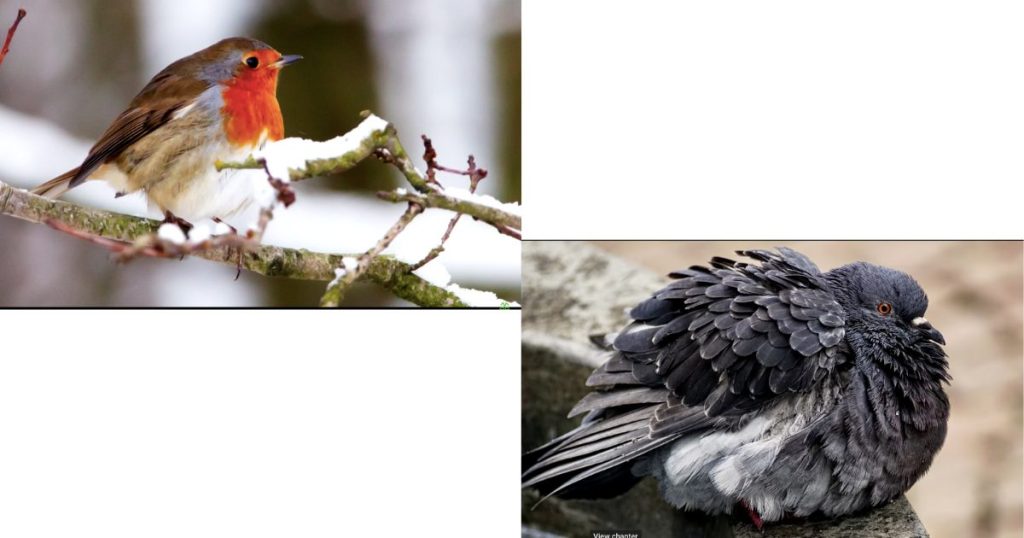
Why?
Because feathers are amazing at keeping you warm!
#2 Flight
Feathers are light and strong, and they are excellent at helping the bird to fly. Flight feathers are on this part of the wings. Flight feathers are long and have more surface on one side than the other. So it’s surprising when you hold a feather and wave it through the air.
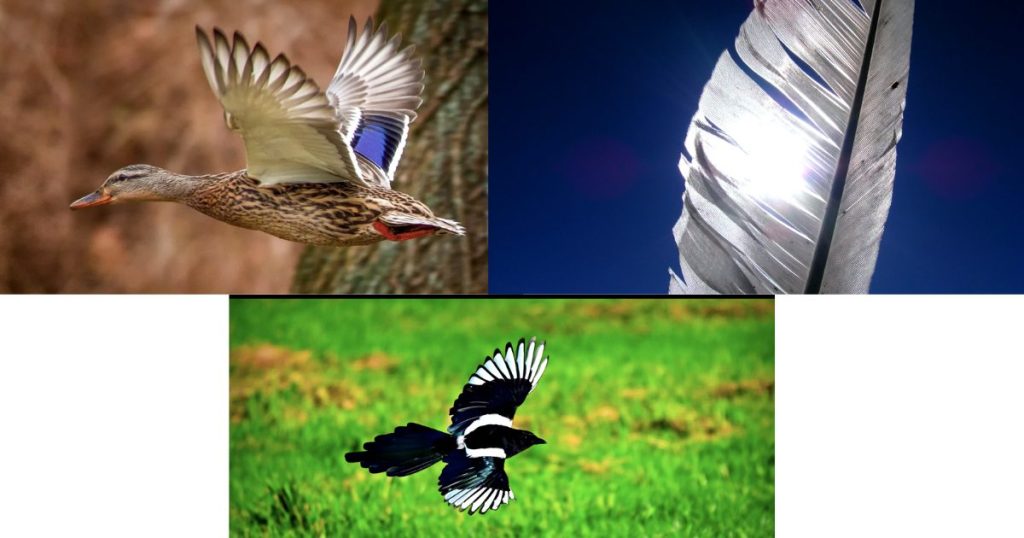
You can feel the air pushing back at you. Imagine a bird using its wings and all the air holding it up. Out of 10,000 bird species, there are only 60 that cannot fly like the ostrich or penguin. That means 99.4% of birds use their feathers to fly!
#3 Camouflage
Feathers can have different pigments and structures built in as they grow.
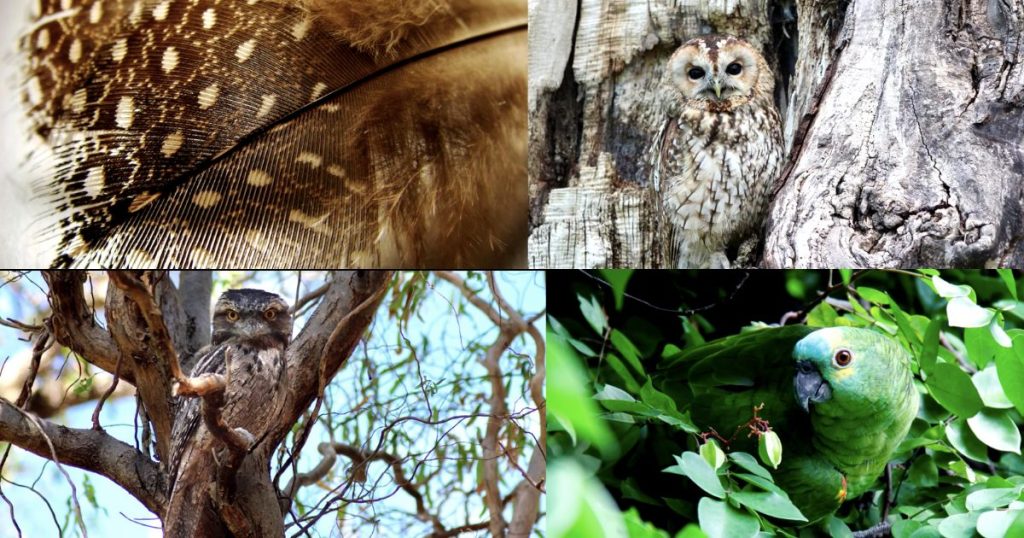
The pattern can make birds blend in really well. Let’s take a few moments to appreciate how well birds can hide. And that’s why the number 3 most common use for feathers is camouflage.
#4 Display
The flip side of feathers that hide a bird is a feather that makes the bird MORE visible.
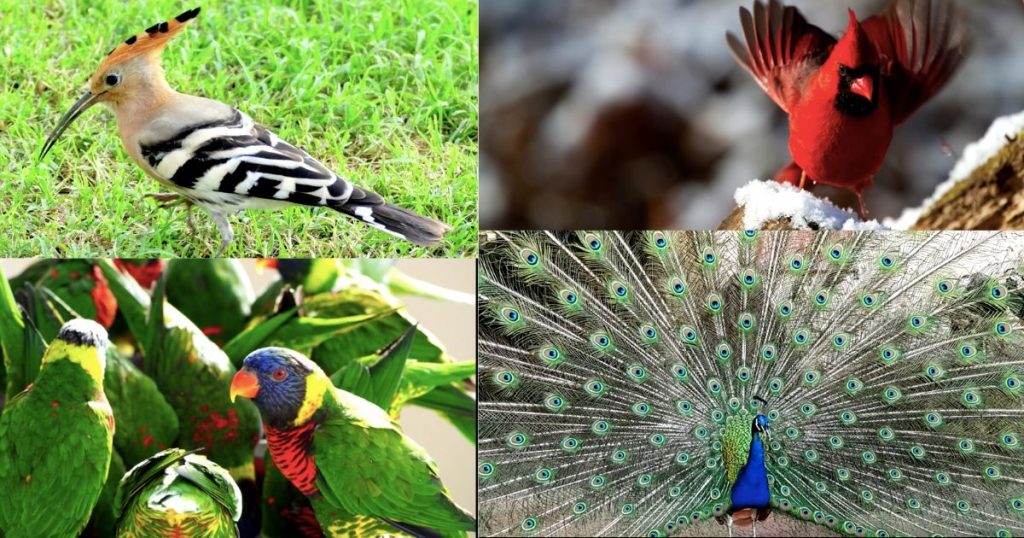
Why would birds have feathers like this?
Because it helps them stay together with their flock and attract other members of their species, the most famous bird display is that of the peacock’s tail. This tail is to show off for females. It’s beautiful to look at, but the rest of the time, it’s just a bunch of heavy feathers to carry. So display must be important to the peacock. That’s it for the four most common uses for feathers.
Birds use them for insulation, flight, camouflage, and display.
Some super-rare uses for feathers specific to species:
#1 Eating Feathers
Grebes are cool-looking water birds. They carry their adorable babies on their backs sometimes. And they teach the babies to hunt. By looking at their long, straight beaks, we can be pretty sure they eat fish. They swallow the fish whole and regurgitate the undigestible parts later. They also regularly eat their feathers and regurgitate them as well. So nobody is totally clear on this, but wrapping fish bones in a big ball of feathers helps them regurgitate safely.
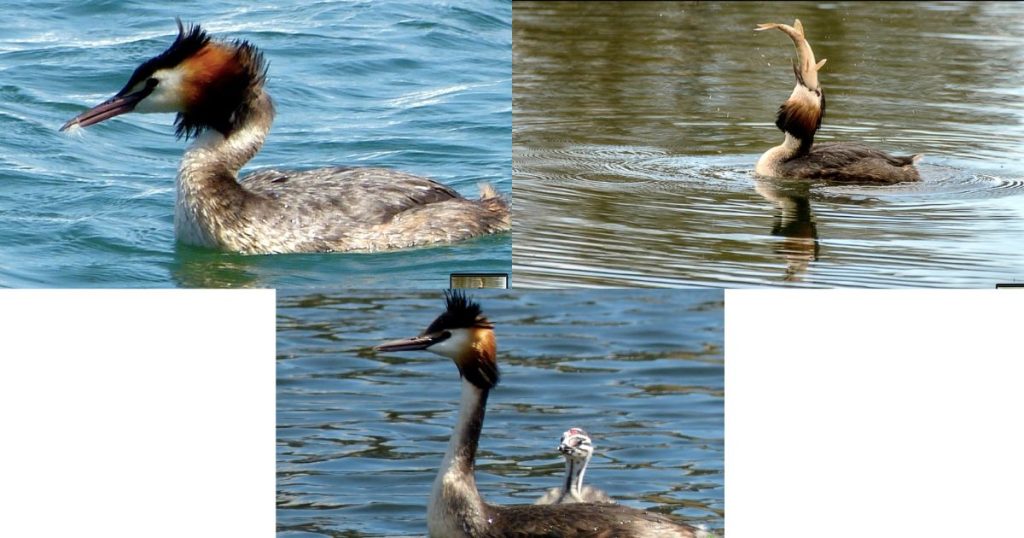
#2 SnowShoe
There’s a bird called a Ptarmigan. We saw them briefly while talking about camouflage feathers because their feathers are great at hiding in the snow. Well, it turns out they have one more trick for living in snow: they have feathery feet! The feathers might help keep their feet warmer, but they act like snowshoes. They spread the bird’s weight and let them walk on the snow instead of sinking in. Pretty neat!
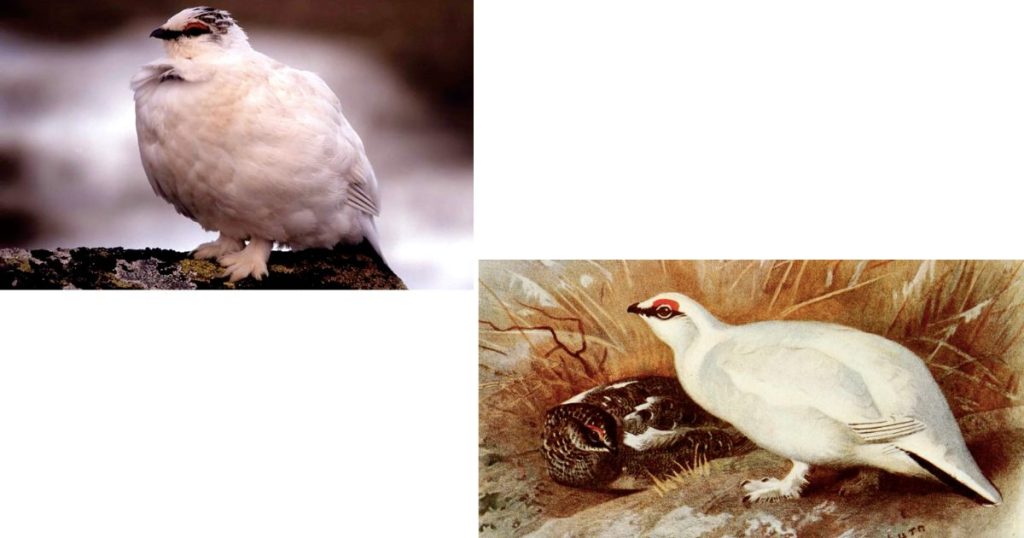
#3 Stealth
Owls hunt in the dark, often only by sound. So their feathers are adapted to be quiet as they fly so they can hear their prey. And, of course, if the owl is quiet, the prey can’t hear it coming! Check out the edge of this owl feather – there are long fringes that cushion the air as it spills off the wing, keeping it smooth and quiet.
#4 Transporting Water
Another grouse with a rare feather! Sand-grouse live in desert regions. It’s dry, and their chicks can get very thirsty. So they have a unique way of bringing water back to their nest. They fly to a watering hole and crouch down. Special feathers on their bellies soak up water, then they fly back to the nest and let the chicks drink from their belly feathers. The feathers start coiled up but spread out into cups when wet.
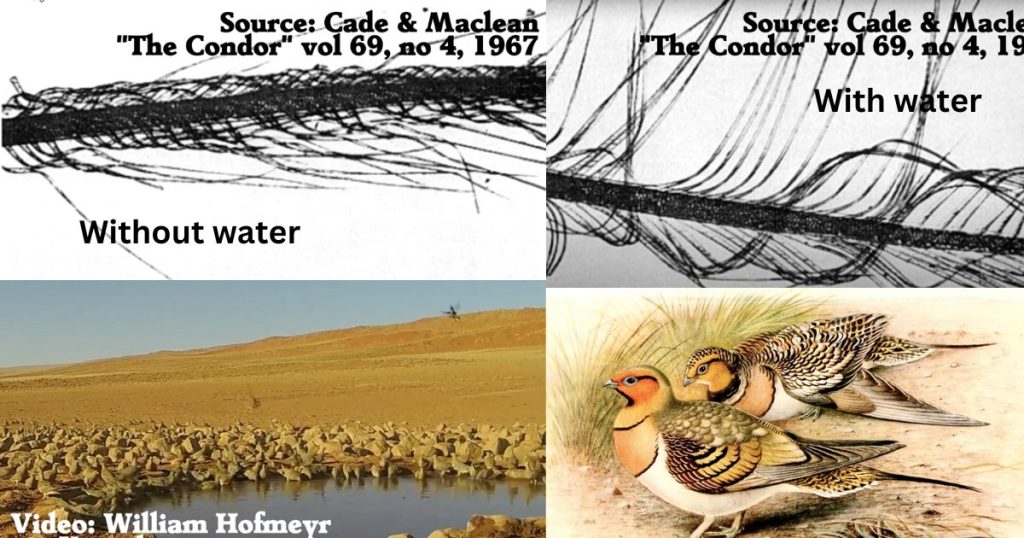
I couldn’t find another bird that does this, but it seems like a great solution for carrying water!
#5 Sound Production
There’s a type of bird that lives in the cloud forests of South America. It’s a pretty and small bird called the Club-winged manakin. But when it’s time for courtship, the club-winged manakin has a unique trick.
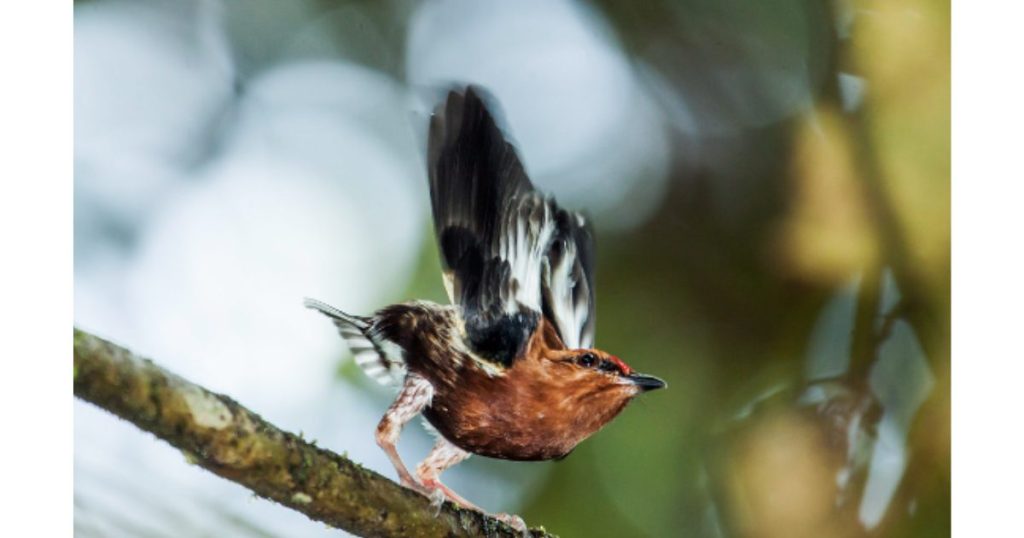
[Tiny FWEEEP] That sound wasn’t a chirp or tweet. It was the sound of his wing feathers. There are special feathers that have cutouts like a musical instrument. The manakin leans forward and shakes his wings 100 times per second. Which is wildly fast, but it’s the exact frequency that gets these feathers to resonate.
Also, Stiff feathers in a snipe’s tail make a loud drumming sound as the bird performs a diving flight during courtship.
#6 Eyelashes
Long feathers over an ostrich’s eyes act like eyelashes, keeping dirt and dust away from the eyeballs.
#7 Scales
Penguin feathers are short and tough. They are packed together tightly like fish scales.
Surprising uses of a chicken feather:
An abundance of chicken feathers is left behind from the 8 billion chickens consumed annually in the United States. Many people were unaware that chicken feathers are used in various products like computers, running shoes, cars, boats, and stormproof roofing. The keratin-rich feathers can be turned into a form of biodegradable plastic that, in turn, can be molded into anything. Scientists are experimenting with using chicken feathers in cosmetics and in diapers as an absorbent to replace wood pulp, which saves trees from being cut down.
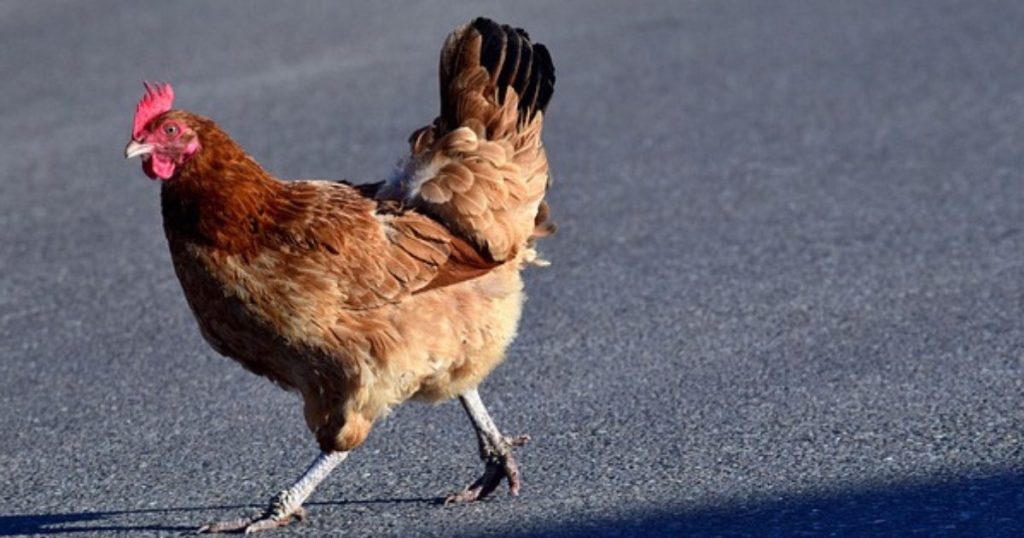
Experts believe that modified feathers could also be used to clean up oil spills in large bodies of water. If they are cut to be the right size, surface tension causes the feather to form networks that trap the oil on the surface of the water. The five to £6 billion of chicken feathers generated by the poultry industry each year would reportedly be capable of cleaning an oil spill over a 200,000 square mile area.
Chicken feathers are rich in protein and nitrogen, the primary nutrients the plants need. Chicken feathers can be processed into a feather meal which can be used as a fertilizer or as a feed additive for hogs and other livestock.
Feathers make up about seven percent of the weight of the chicken.
According to a study published in 2020, about 66.5 billion pounds of chicken were consumed in the united states alone. Seven percent of that is about 4.7 billion, which means 4.7 billion pounds of chicken feathers available for disposal in the united states alone that year.
But we can use those feathers without wasting them.
Large amounts of chicken feathers are made into useful products such as feather meal, allowing the disposal of feathers that would otherwise be a burden on the environment.
We’ll talk about feather meal, how it is used and made, and how it is used as a fertilizer.
How is a feather fertilizer made?
Feathers contain a protein called keratin. Their molecules are strongly bonded to each other to be digestible, but they need to be broken down. The process used to break them down is called hydrolysis, where feathers are placed into a hydrolyzer which is simply a pressure vessel where feathers are cooked at 140 degrees Celsius. However, ordinary pressure cookers are limited to only around 5 to 15 psi pressure, which is way lower compared to the pressure required for this process, Hydrolyzers are pressure cookers with very thick walls and operate at high temperatures, and after cooking, the feathers are made to pass through a steam dryer they are dried to about seven to ten percent moisture content after which they are cooled down and grounded.
How is a feather used as a fertilizer?
Feather fertilizer is not water-soluble and can be used as a liquid fertilizer. It should be mixed with soil and allowed to decompose to release nutrients. It is a slow-release organic fertilizer. It can provide plants with nitrogen over an extended period of time, lasting up to three to six months, depending on environmental factors like the soil ph, moisture content, temperature, and the presence of good microorganisms.
All images sourced by https://www.youtube.com/@BioBush